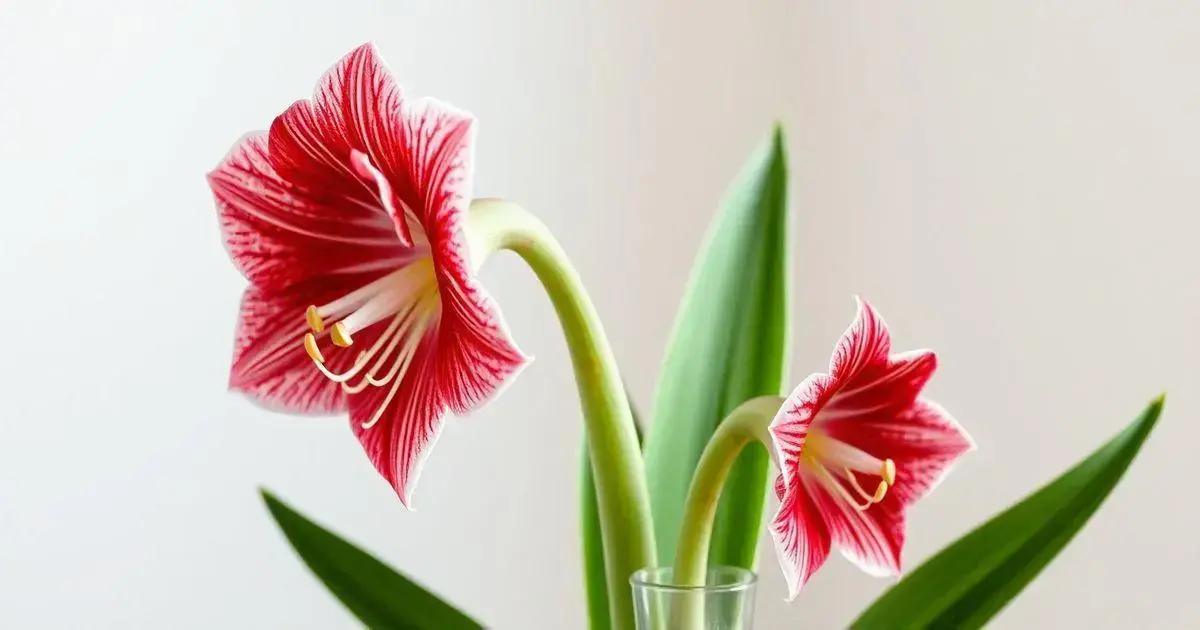How to take care of an amaryllis plant? The journey of nurturing this stunning flower begins with understanding its unique requirements. Unlock the secrets to keeping your amaryllis blooming beautifully indoors, adapting your care methods as the plant grows. Prepare to delve into practical tips that will help you create the perfect environment for these vibrant beauties.
Table of Contents
ToggleEssential amaryllis care tips for beginners
How to take care of an amaryllis plant? This beautiful flower is perfect for brightening any indoor space. Here are essential tips to ensure its health and vibrant blooms.
Watering guidelines for your amaryllis
- Water the plant thoroughly after the soil feels dry 1-2 inches down.
- Avoid letting the plant sit in standing water.
- During the growing season, water the amaryllis weekly to keep it hydrated.
- Reduce watering in the dormant period after blooming.
Optimal light conditions
Amaryllis thrives in bright, indirect light. Here’s how to provide the ideal lighting:
- Place your plant near a south or west-facing window.
- Rotate the pot regularly to ensure even growth.
- Avoid exposing the plant to direct sunlight to prevent leaf scorch.
Fertilization strategies for best results
To promote healthy growth and blooms, adhere to these fertilization tips:
- Use a balanced, water-soluble fertilizer every 4-6 weeks during the growing season.
- Switch to a fertilizer higher in phosphorus (the middle number in N-P-K ratio) to encourage blooming.
- Do not fertilize during the dormant phase.
Common pests and diseases to watch for
Keeping your amaryllis healthy means being vigilant against possible threats:
- Check for aphids on the leaves; they can harm your plant.
- Look for signs of bulb rot, which may indicate overwatering or poor drainage.
- Get rid of mealybugs by gently wiping them off with a cotton swab dipped in alcohol.
For more comprehensive tips, consider exploring indoor gardening techniques that can further enhance your amaryllis experience.
Understanding amaryllis light and watering needs

Understanding amaryllis light and watering needs is crucial for its growth and blooming. Light and water play significant roles in keeping your amaryllis healthy and vibrant.
Optimal light conditions for amaryllis
The amaryllis thrives best when it receives adequate light. Here are some guidelines:
- Provide at least 6-8 hours of bright, indirect sunlight each day.
- Avoid placing the plant in direct sunlight to prevent leaf scorch.
- When excessive gloom prevails, consider using grow lights to supplement its sun exposure.
How to water your amaryllis effectively
Watering is fundamental to amaryllis care. Here are essential watering practices:
- Water when the top inch of soil feels dry—usually every 1-2 weeks.
- Ensure the pot has drainage holes to prevent standing water, which can lead to bulb rot.
- Reduce watering during dormancy (after blooming) to prevent decay.
Signs of improper light and watering
Monitor your amaryllis for these signs indicating potential issues:
- Yellowing leaves may suggest overwatering or inadequate light.
- Stunted growth might indicate insufficient light exposure.
- If leaves grow leggy, know that your plant is reaching for more light.
For more effective strategies on indoor plant care, consider exploring indoor gardening techniques that can help you optimize your amaryllis care.
How to repot amaryllis bulbs effectively
How to repot amaryllis bulbs effectively can make a difference in their growth and blooming. This process is essential for maintaining healthy plants and ensuring vibrant flowers.
When to repot your amaryllis bulbs
Knowing the right time to repot is crucial. Here are some signs that indicate your amaryllis needs repotting:
- The bulbs are crowded in the pot.
- Soil drainage has diminished, indicating poor soil condition.
- It has been more than three years since they were last repotted.
Steps for successful repotting
Follow these steps to ensure your amaryllis bulbs thrive after repotting:
- Choose a pot that is 1-2 inches wider than the current pot.
- Use a well-draining potting mix designed for bulbs.
- Remove the old plant carefully, dusting off excess soil without damaging the roots.
- Place the bulb in the new pot, adding fresh soil while ensuring the top half remains above the soil surface.
- Water the plant lightly after repotting to settle the soil.
Aftercare for repotted amaryllis bulbs
Post-repotting, take care of your amaryllis properly:
- Keep the plant in indirect sunlight to avoid shock.
- Resume a regular watering schedule once the soil dries slightly.
- Monitor for new growth, which indicates successful repotting.
For additional tips on maintaining indoor plants, consider exploring indoor gardening techniques that will aid in the care of your amaryllis and other indoor flora.
In conclusion
Caring for an amaryllis plant involves understanding its needs for light, water, and proper repotting techniques. By following these guidelines, you can enjoy stunning blooms and healthy foliage. Remember, patience and observation are key as you nurture your plant. For additional advice and tips on enhancing your indoor garden, explore various gardening communities and resources.

